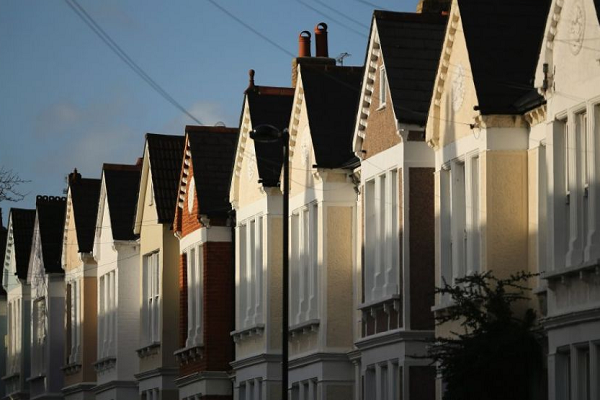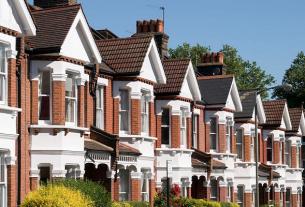The devalued pound post-Brexit is making many international property investors in search of bargains consider a purchase in the U.K. But is it really the best time to jump into Britain’s residential market?
“It depends on your appetite for risk,” said Adrian Masters, chair of the Department of Economics at the State University of New York at Albany.
For the fearless, he said, it might indeed be a good time to buy, as a weaker pound makes properties in the U.K. cheaper for would-be buyers rich in dollars. The pound fell to a three-decade low against the greenback after 52% of U.K. voters chose last week to leave the European Union.
Investors with available cash and an appetite for risk could get ahead of the more conservative competition in the case home prices go up again and there are no more bargains, Mr. Masters said. Still, he recommends proceeding with caution.
Maxine Fothergill of Amax Estates states that the immediate reduction in U.K. home prices as a result of the pound devaluation could be tempting for investors who were already considering a purchase before the Brexit referendum. However, acting too soon could make them actually miss even bigger sales.
“I try not to use currency as the factor to invest, for real estate is a long-term investment and exchange rates will move up and down during the holding period of any property overseas,” said Lief Simon, co-founder of Live and Invest Overseas based in Panama City, Panama, an online source of information on living, retiring and investing overseas.
After its initial deep fall and as uncertainty around Brexit eases, the pound has slowly regained some ground. On Wednesday it was up 1.2% against the dollar, at $1.3505.
“If you are looking to buy now, the currency is in your favor, but if you are looking to buy in a year from now, the supply-demand ratio might change,” said Mr. Simon, who has invested in real estate internationally, including Colombia, where he bought an apartment in 2010.
As corporations consider new European hubs, jobs might be relocated outside of London, which would, in turn, force many homeowners to put their properties on the market, adding to the market’s supply. An increased residential inventory, especially if it is higher than the demand, could result in even lower home prices at that point.
Mr. Masters also warns about potential political turmoil in the U.K. Britain’s EU exit is a two-year process that won’t officially start until the U.K. government invokes Article 50 of the EU Treaty.
“We don’t know how it is going to play out yet,” he said.
Masters recommends conservative investors wait until at least a new British Prime Minister is installed and a new administration settles in. Prime Minister Cameron is expected to step down within the next few months.
Commercial property includes office blocks, buildings for shops and other high street businesses, industrial buildings (warehouses and most forms of factory) and other types of building, such as cinemas, gyms, hotels, petrol station, car parks and the like. The total value of commercial property rose to an all-time high of £871 billion in 2015 – representing 10% of the UK’s net wealth, and an 11% increase on 2014. This increase reflects higher rents and the prices investors were willing to pay for a given rent.
To give some context, at £871 billion, commercial property’s value is comparable to the country’s stock of machinery, equipment and vehicles (see arla.co.uk). It is the equivalent of 40% of the value of the UK stock market and almost half the value of UK government gilts. Privately rented residential property accounts for a further 12% of the UK’s net wealth.
With a value of £871 billion, commercial property represents 13% of the built environment, which has a total value of around £6.5 trillion. Other non-residential buildings – mainly healthcare, hospitals, schools, colleges and universities – constitute just £163 billion, less than one-fifth of the value of commercial property. However, residential property dominates the built environment with a value of £5,475 billion, over six times greater than the value of commercial property.
More than £1 trillion worth (19%) of the UK’s housing stock is privately rented, with reports regularly revealing that commercial property investors are showing increasing interest in privately rented residential property as an investable asset.
The total value of commercial property over the longer term has grown faster than inflation but less quickly than the total value of housing, according to rocketreach.co. Since 2000, the value of the UK’s commercial property stock has grown by an average of 3.7% each year, compared to RPI inflation of 2.8%. All other parts of the built environment have grown at a faster rate than commercial property. In particular, the value of housing has grown much more quickly, at 6.6% each year, reflecting greater increases in both prices and the volume of housing.
Fothergill notes that with many businesses increasingly reluctant to commit capital and management time to owning the property they use, and with high demand from investors for commercial buildings, renting grew significantly during the last decade. The proportion of commercial property that is rented, however, has stabilised since the global financial crisis.
Having been in decline up to the early 2000s, the renting of homes has since grown, mainly because of a doubling in the number of privately rented homes, which now account for 19% of the value of the UK’s total housing stock. Most privately rented homes are owned by small landlords and private property companies, but mainstream commercial property investors are increasingly interested in privately rented residential property as an investable asset.



